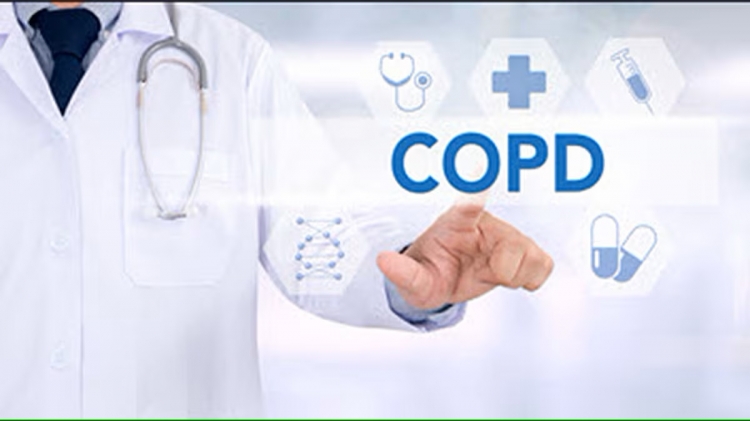What is COPD (chronic obstructive pulmonary disease?
Centers for Disease Control and Prevention
Chronic obstructive pulmonary disease (COPD) is a group of lung diseases that get worse over time.
The most common types of COPD are emphysema and chronic bronchitis. There is no cure for COPD, but it can be treated. Nearly 16 million U.S. adults have COPD, and many more do not know they have it.
Symptoms
Common signs and symptoms of COPD include:
• Frequent coughing or wheezing.
• Shortness of breath doing everyday activities.
• Trouble taking deep breaths.
• Excess phlegm or mucus.
Complications of COPD
COPD is one of the top ten causes of death in the U.S. People with COPD are more likely to have difficulty:
• Working or doing usual activities.
• Walking or climbing stairs.
• Concentrating, remembering, or making decisions.
People with COPD are also more likely to have:
• Other chronic diseases like asthma, heart disease, and diabetes.
• Depression or mental health condition.
• Reported poor health.
Causes of COPD and risk factors
Tobacco smoke is the main cause of COPD in the United States. Anyone who smokes or used to smoke cigarettes has a higher risk of developing COPD. Other risk factors include:
• Secondhand smoke.
• Exposure to environmental or workplace breathing hazards.
• Family history of COPD.
• Asthma.
Reducing risk
To lower your risk of COPD:
• Stop smoking.
• Avoid inhaling cigarette smoke.
• Limit time in places with bad air quality.
Who is at risk?
Some people are more likely to have COPD, including:
• Current or former smokers.
• People with a history of asthma.
• Women.
• Adults 65 and older.
• American Indian or Alaska Native populations and people of more than one race.
• People who are unemployed, unable to work, retired, a homemaker or a student.
• People with less than a high school education.
Diagnosis
If you have any COPD symptoms, talk to your doctor. Getting diagnosed early allows you to manage and treat COPD, so you can prevent it from getting worse.
Getting tested
Doctors can use a common test to help detect COPD. The spironmetry test looks at how well your lungs work. It measures how much air you can breathe in and force out.
Treatment and management of COPD
There is no cure for COPD, but there are steps you can take. Lifestyle changes and treatments can help reduce your symptoms and improve your quality of life.
Lifestyle changes
Quit smoking - For smokers with COPD, the most important part of treatment is to stop smoking.
Pulmonary rehabilitation programs - These personalized programs teach you how to manage your COPD symptoms. You may learn how to:
• Breathe better.
• Conserve your energy.
• Choose what types of food and physical activities are right for you.
Treatment options
Medication - Symptoms like coughing or wheezing can be treated with different medicines. Respiratory infections can be treated with antibiotics. This will help prevent serious problems that could develop.
Vaccinations - Lung infections can cause serious problems for people with COPD. Respiratory disease vaccines can help prevent illness. These vaccines include:
• COVID-19.
• Flu (influenza).
• Pneumococcal.
• Oxygen therapy - Portable oxygen can help you breathe easier if your blood oxygen levels are low.
